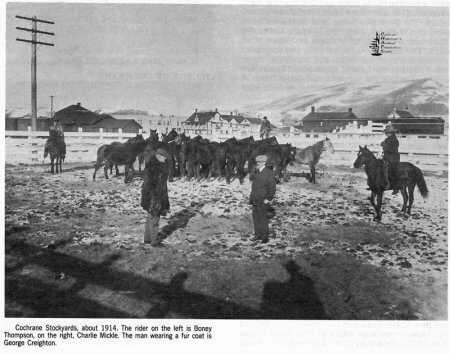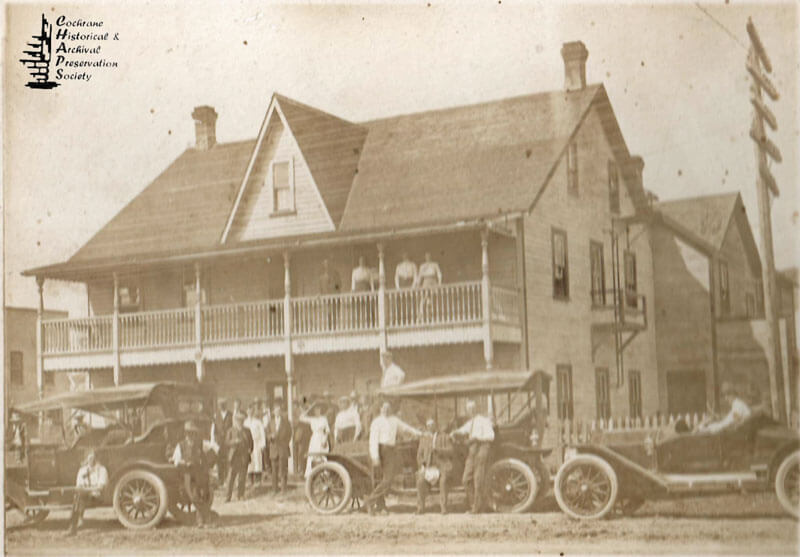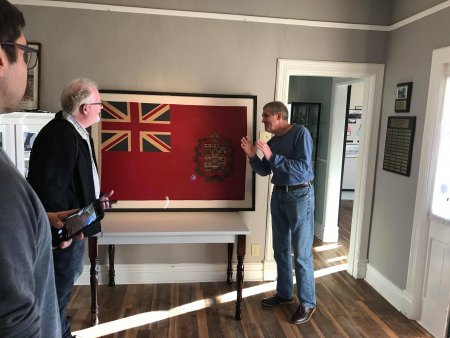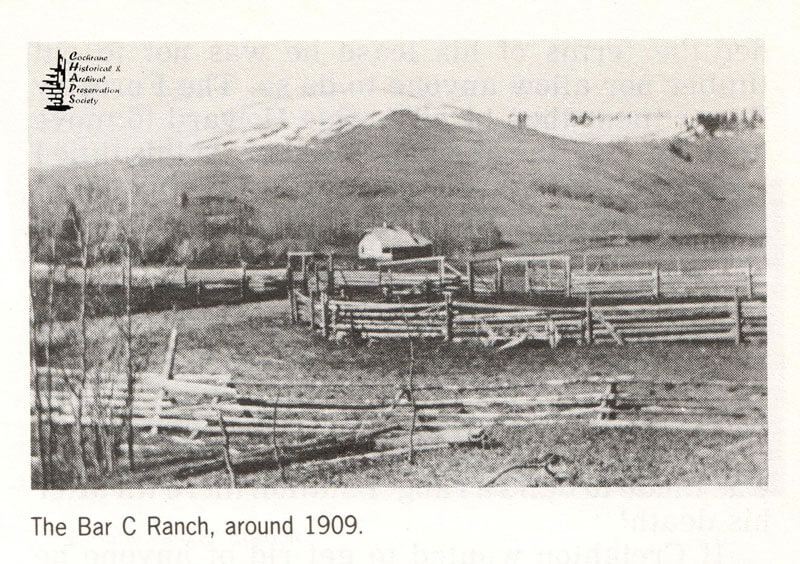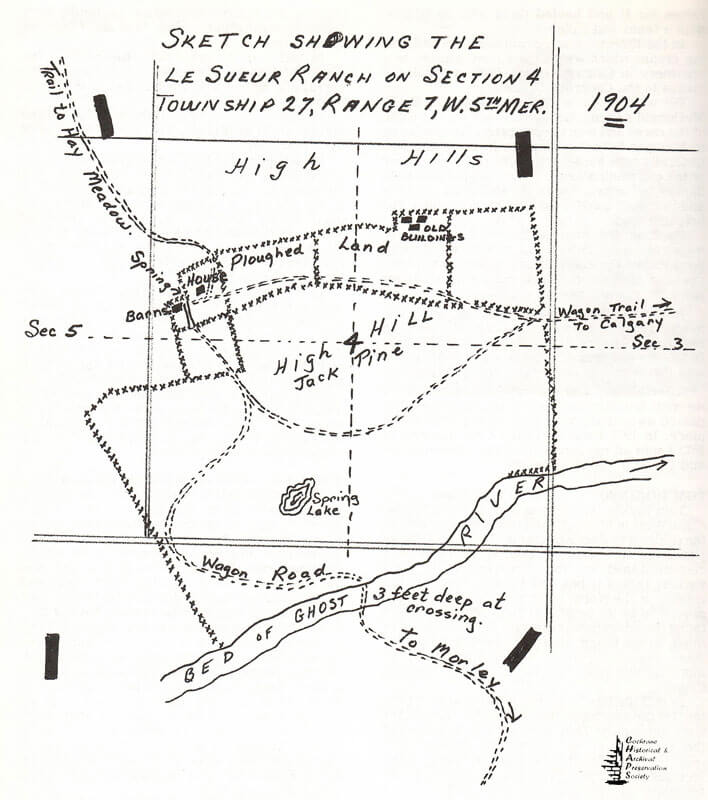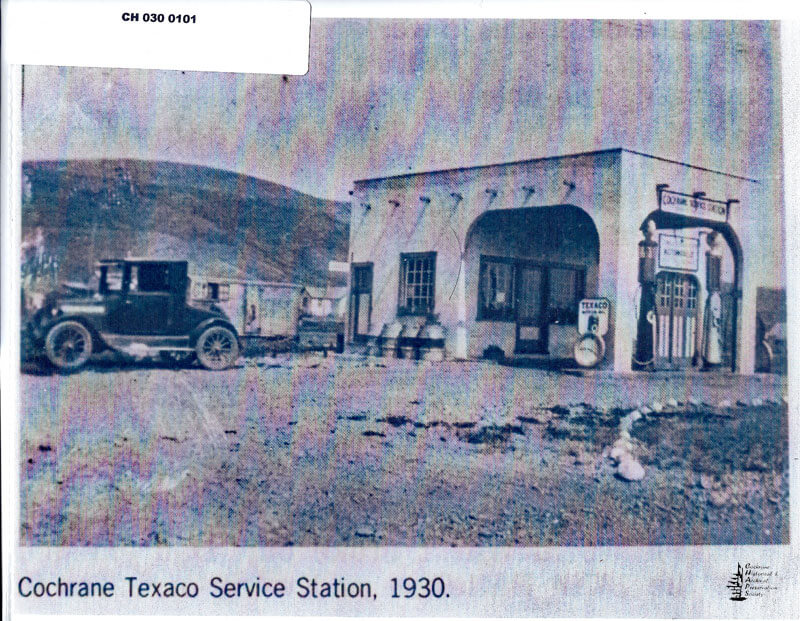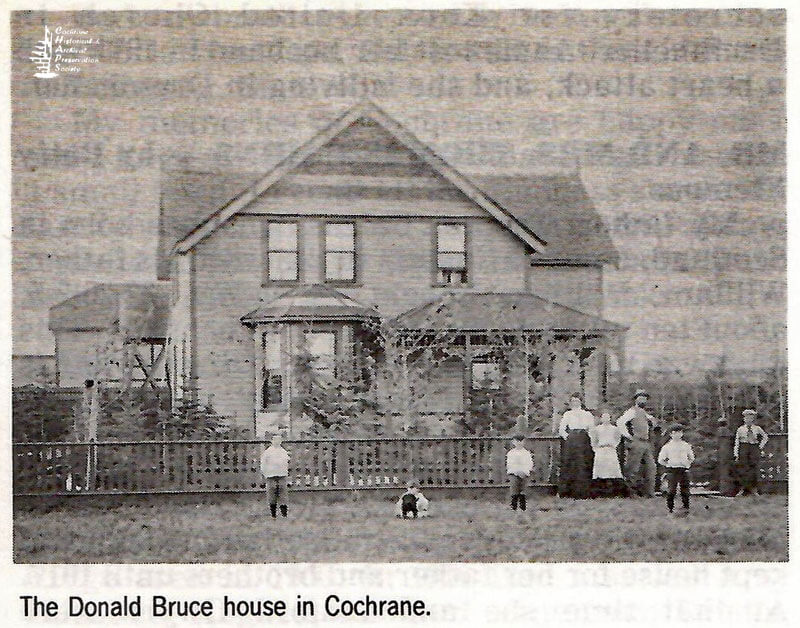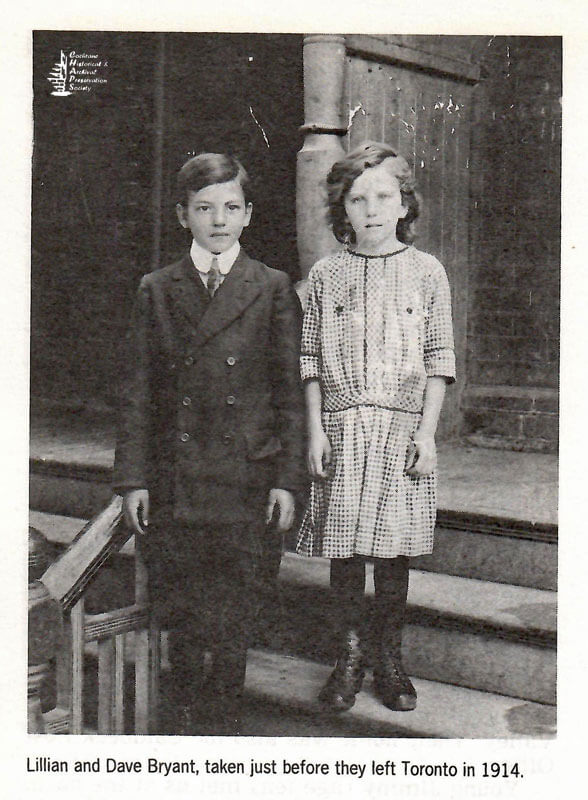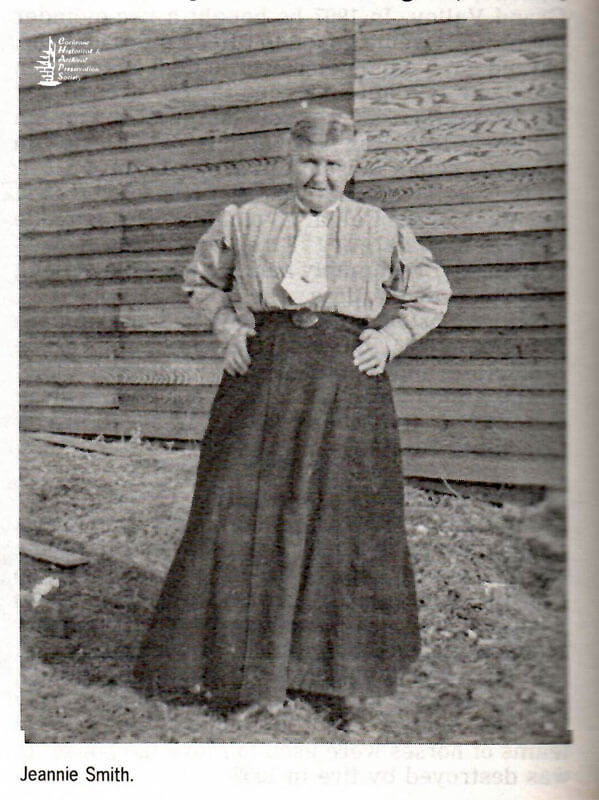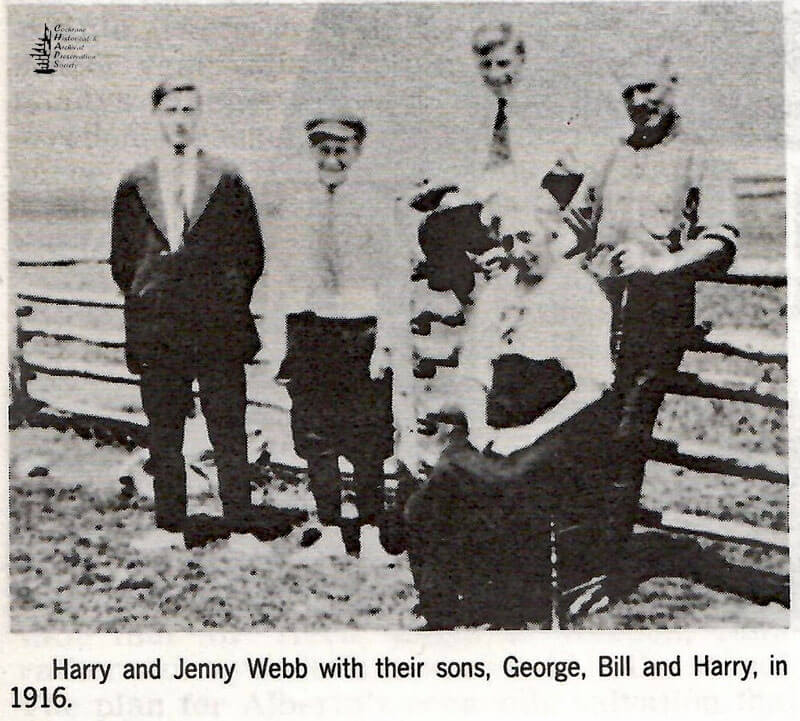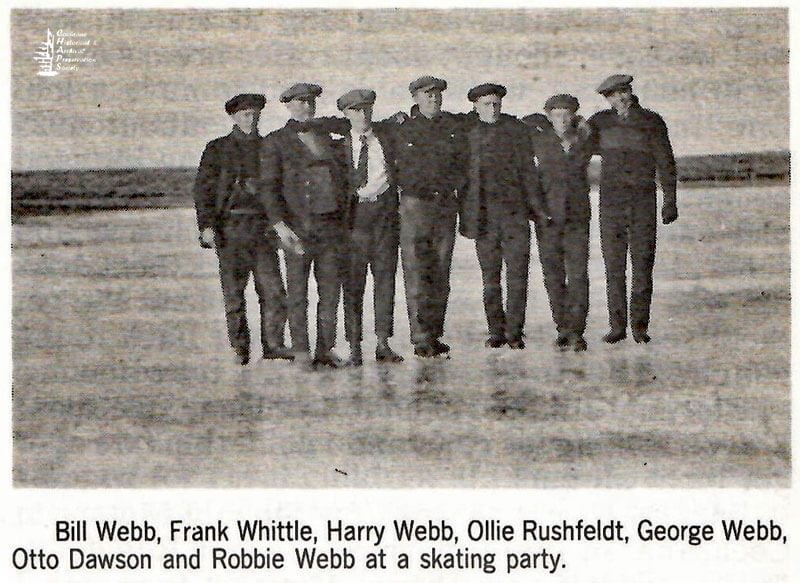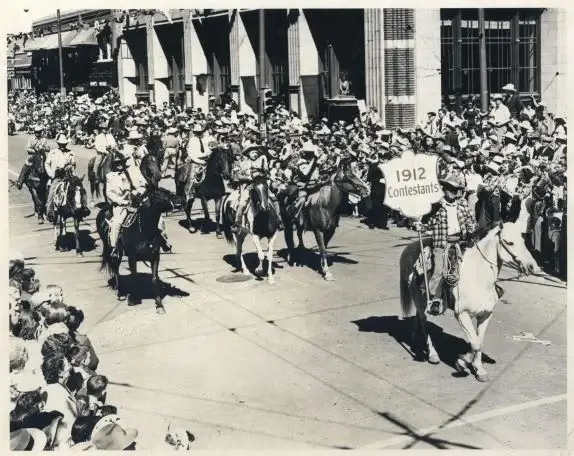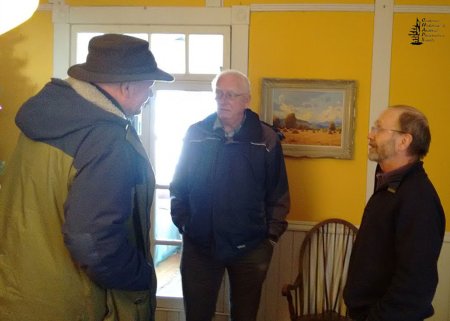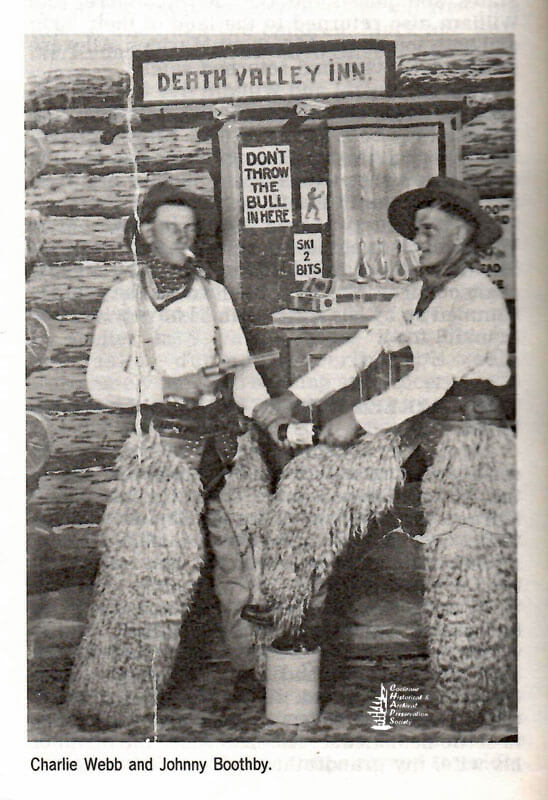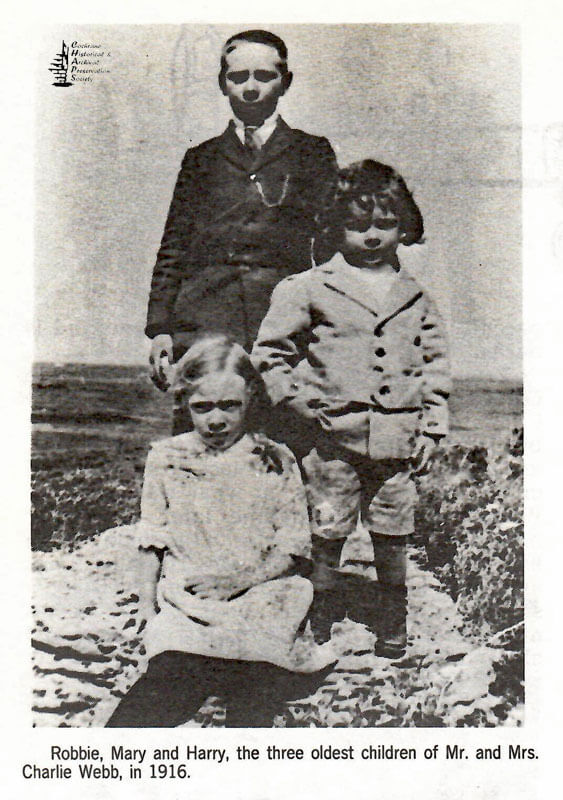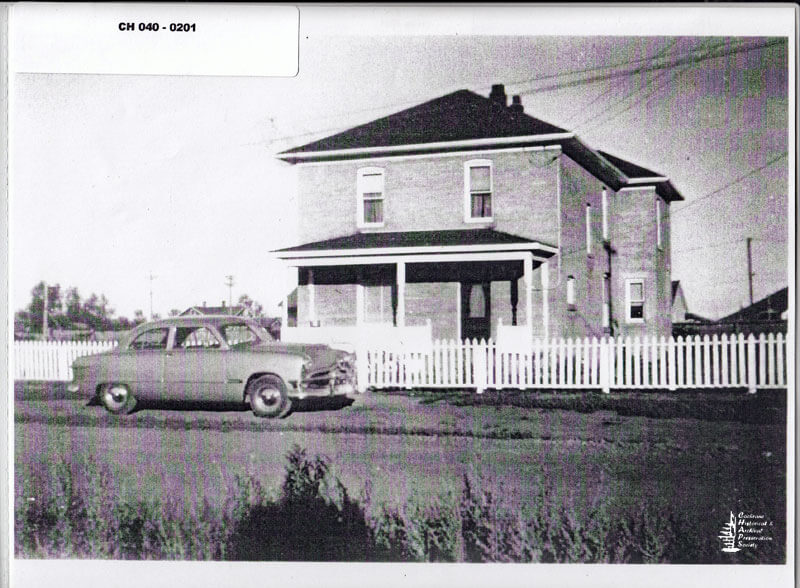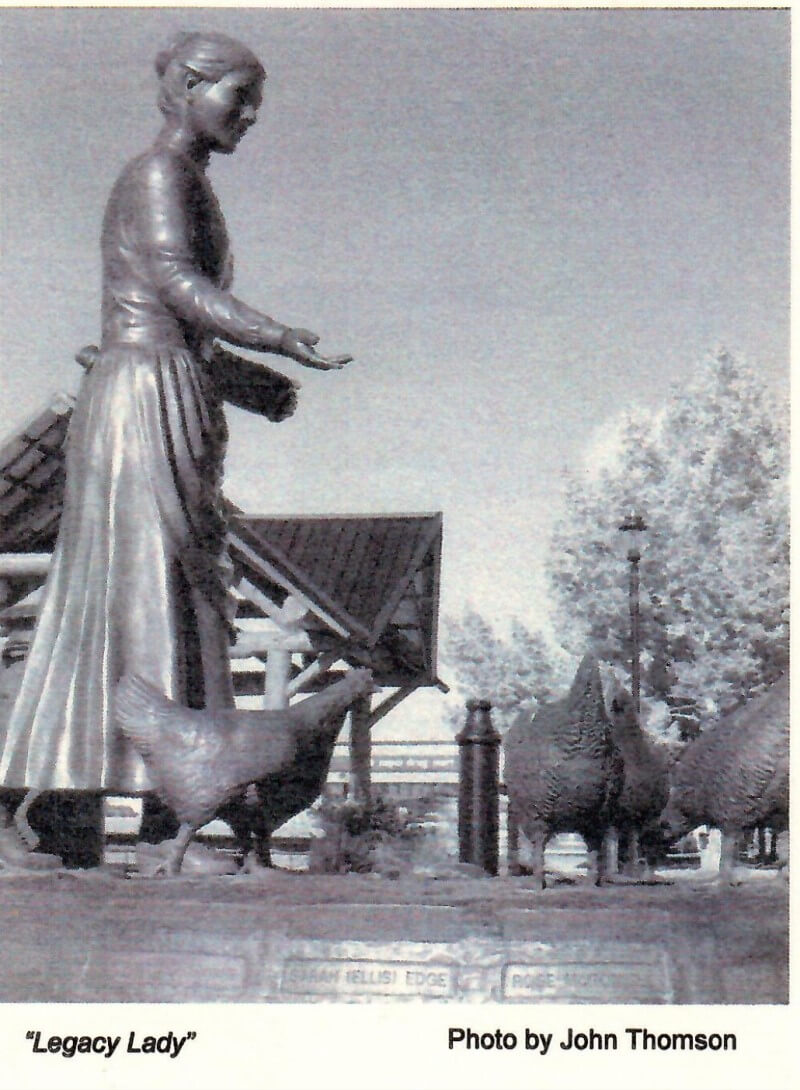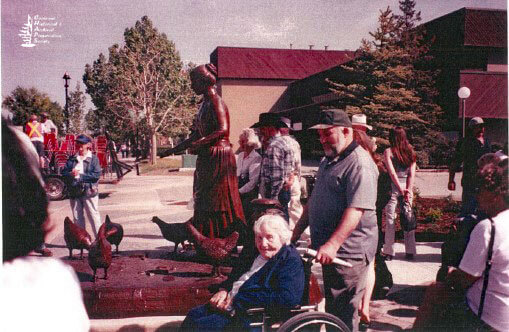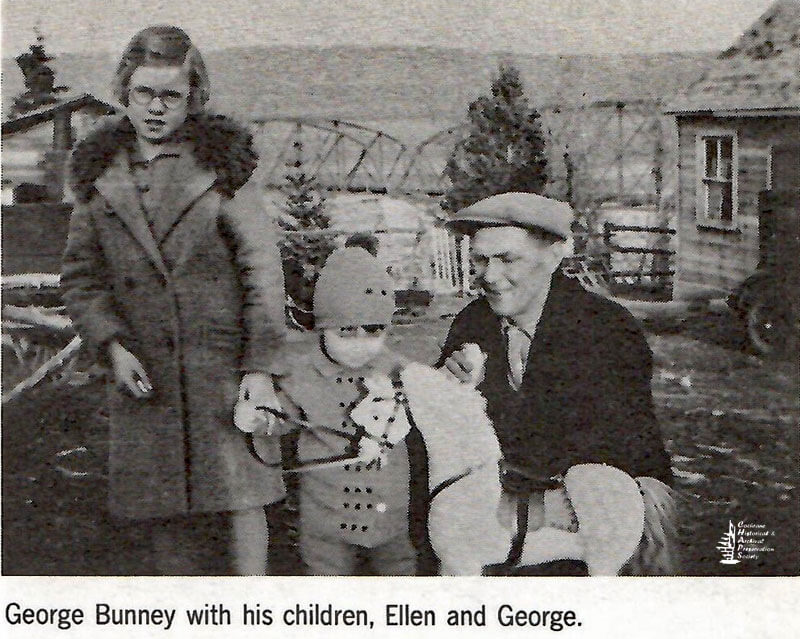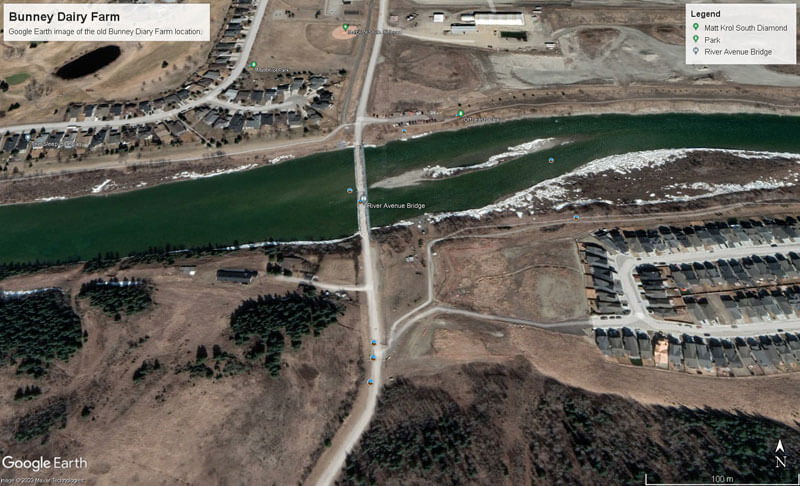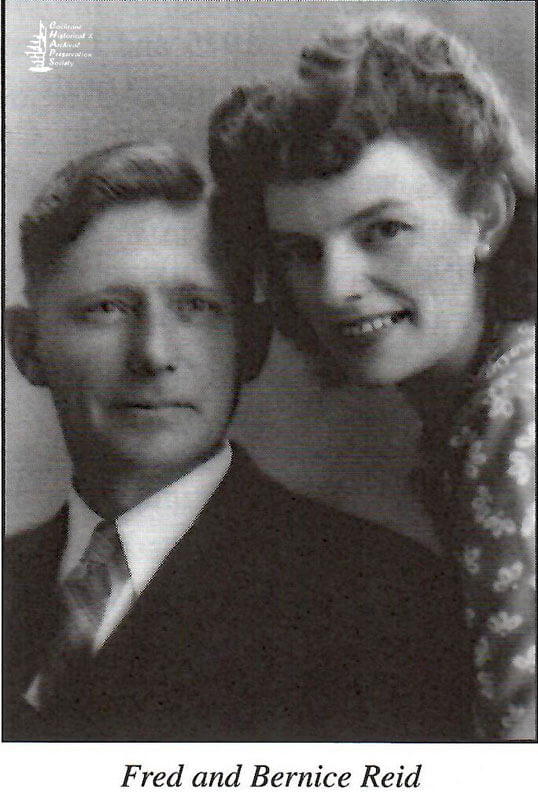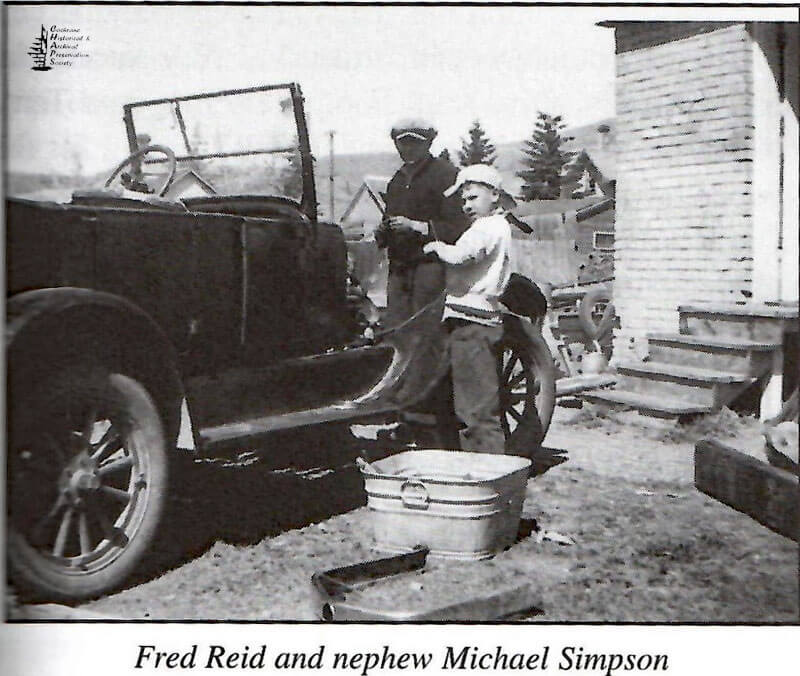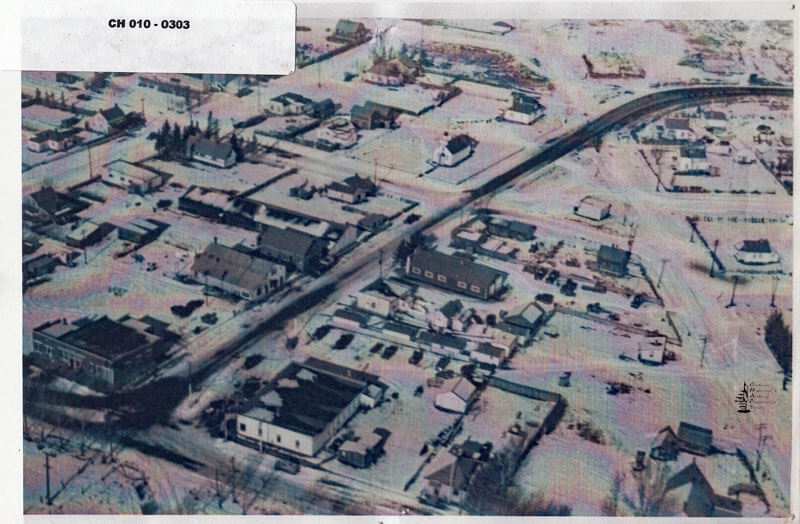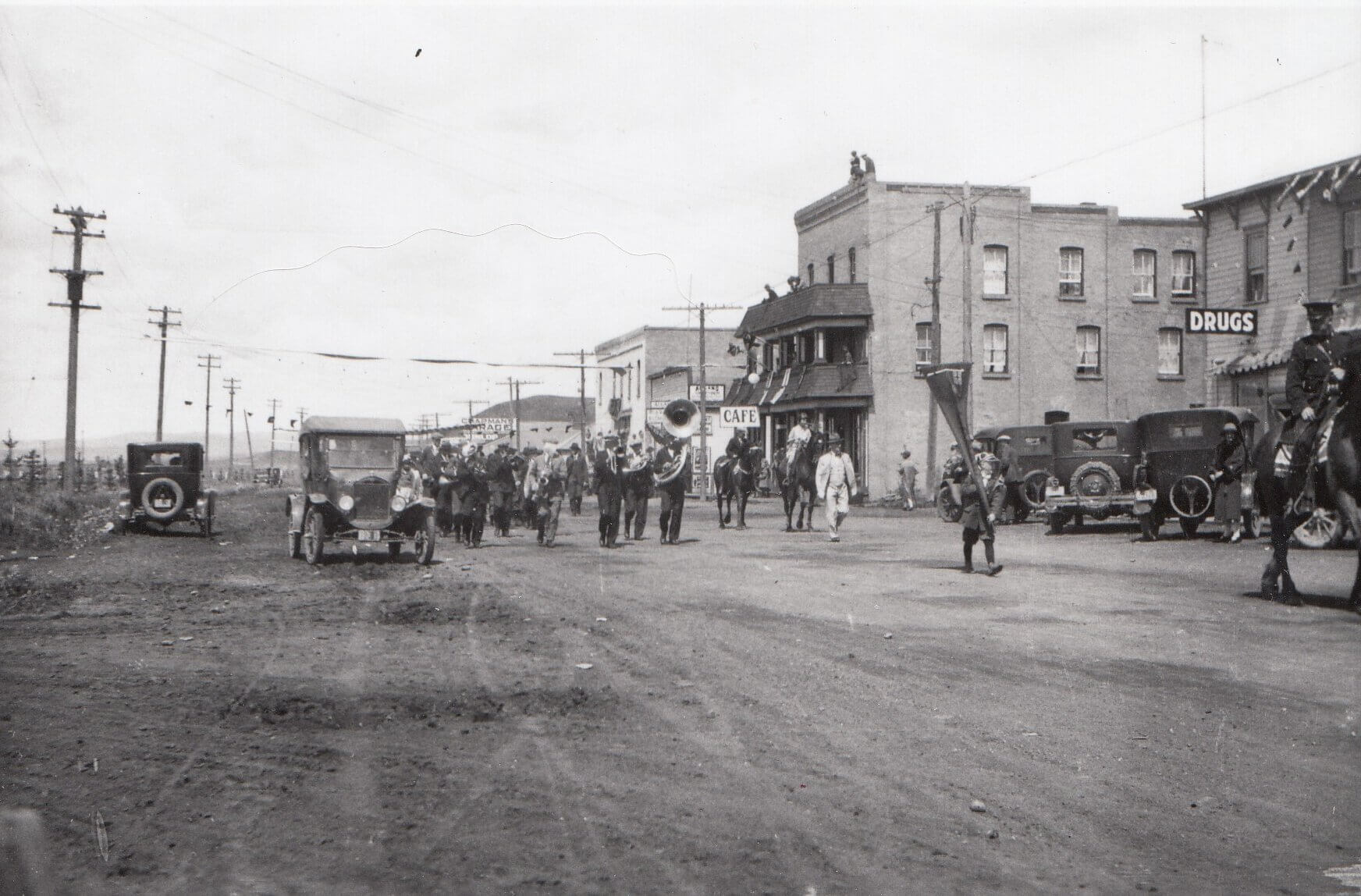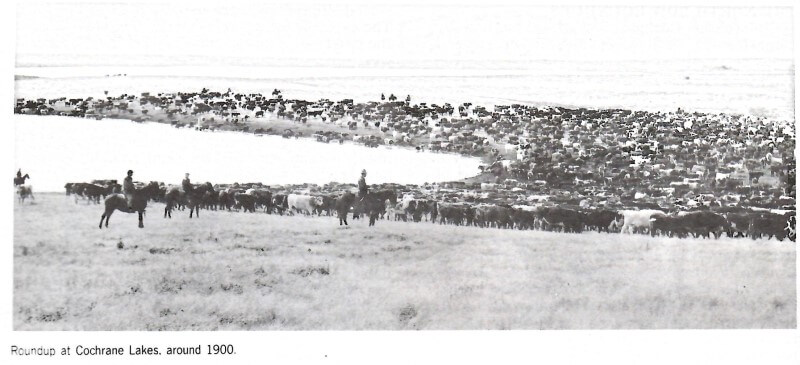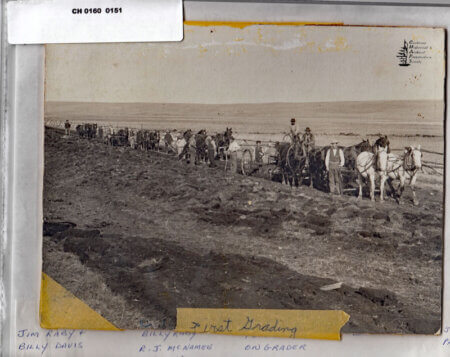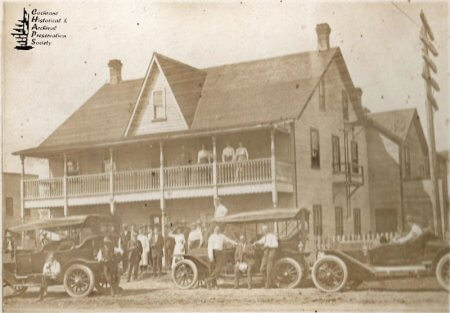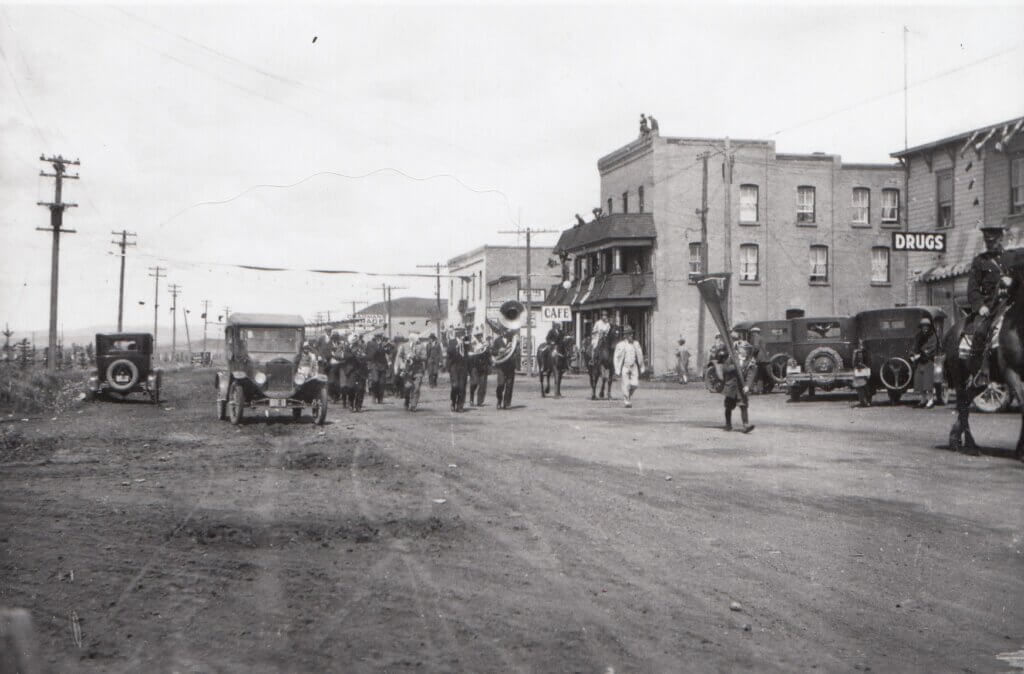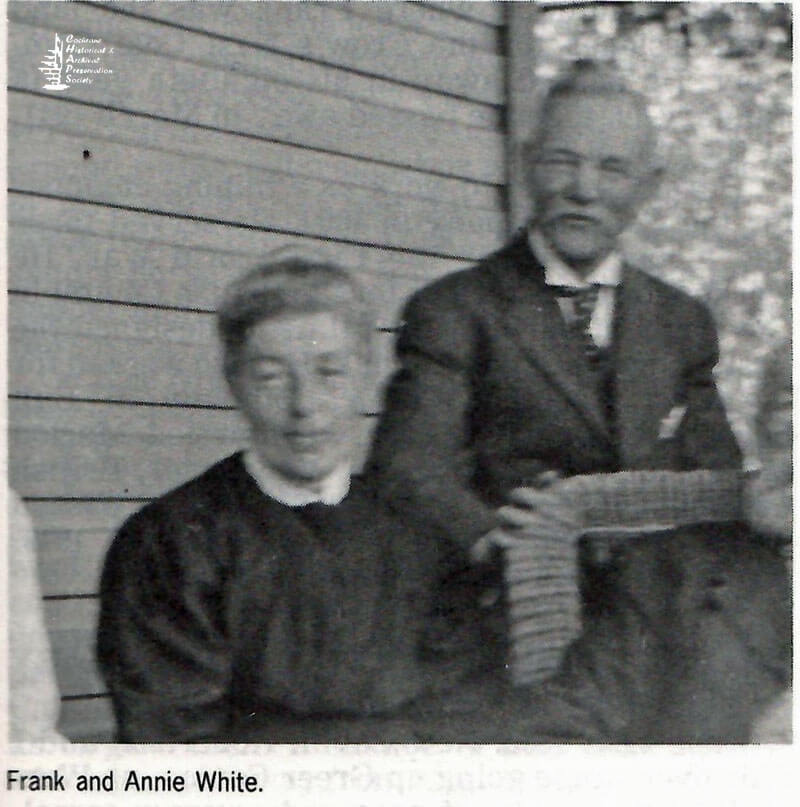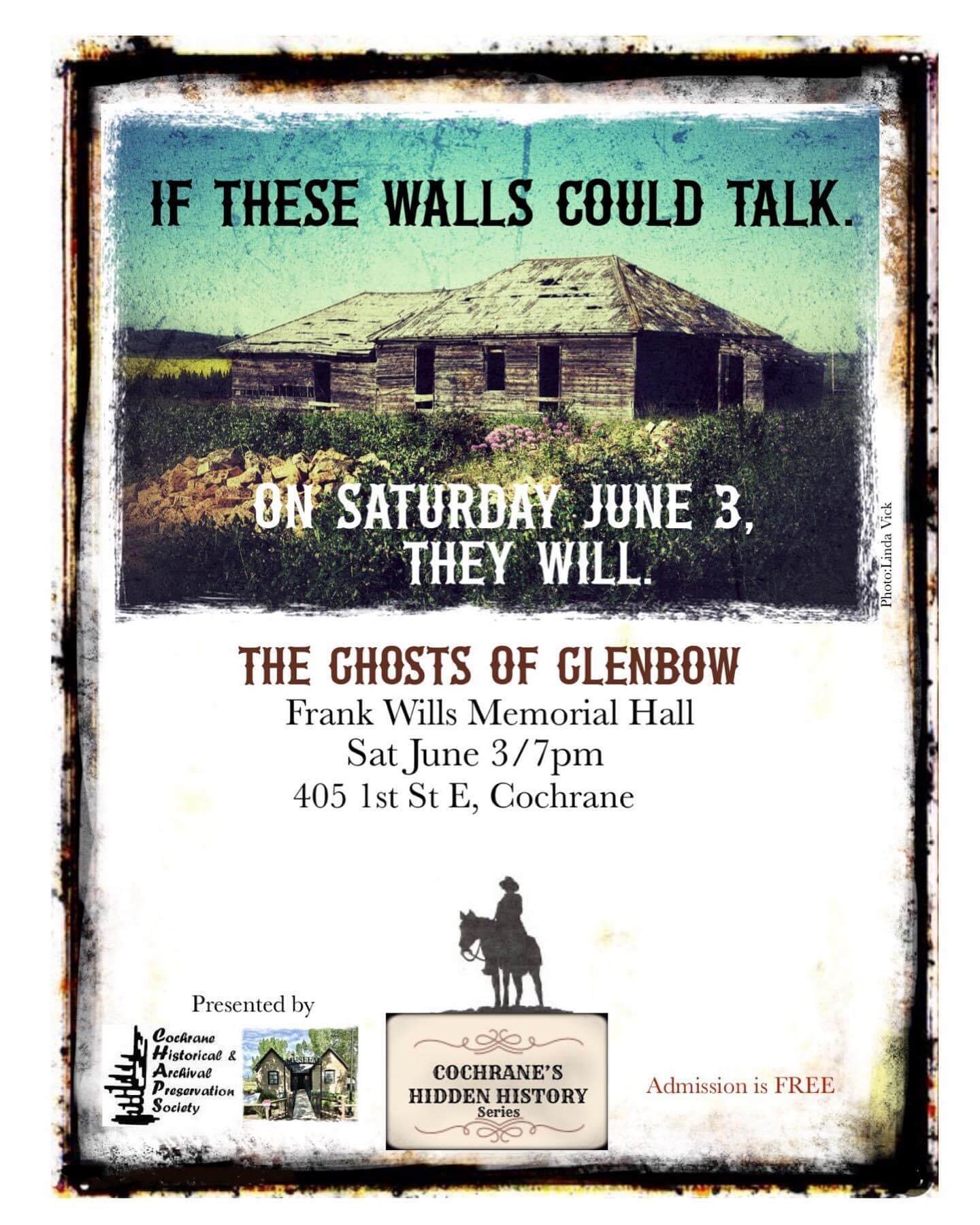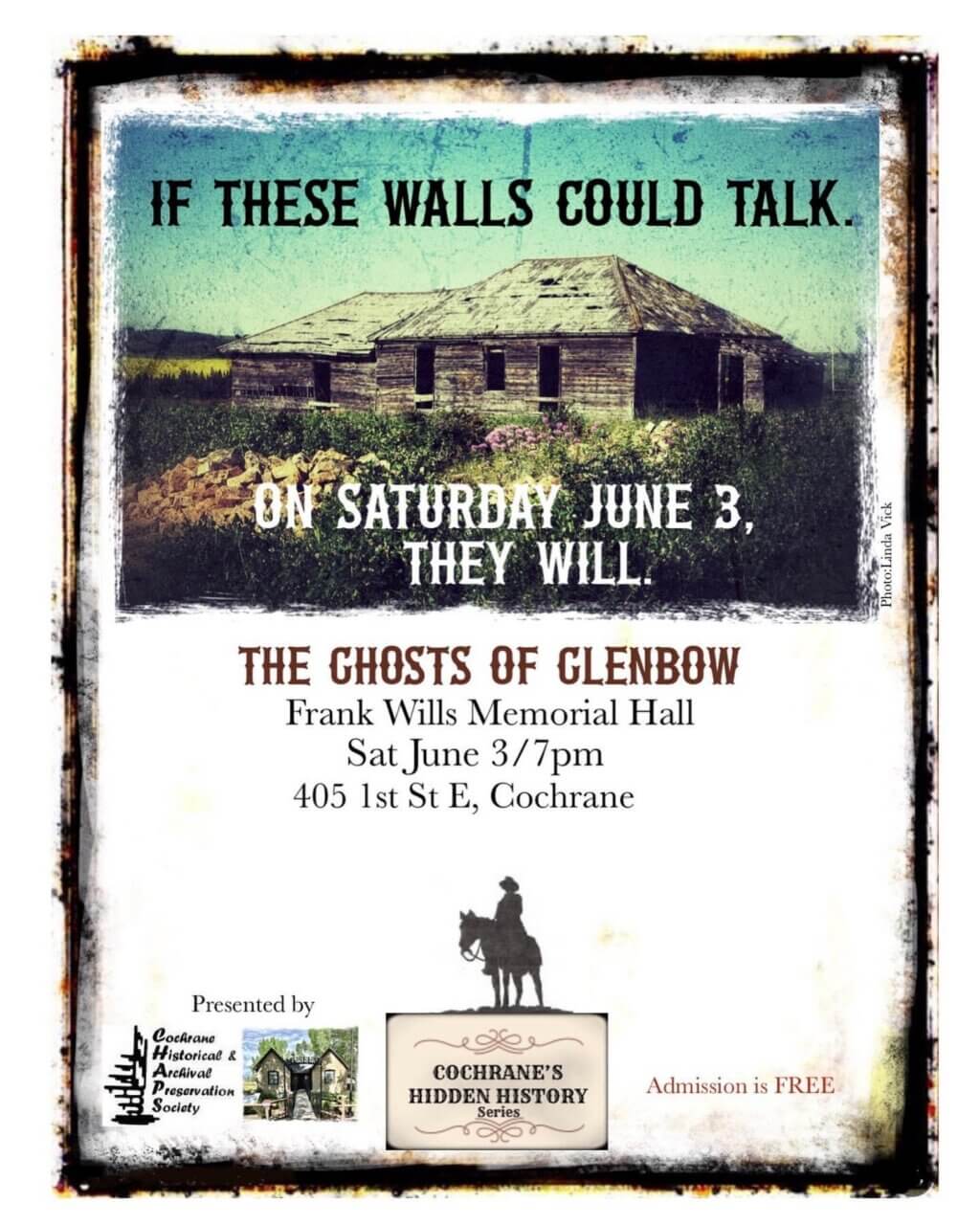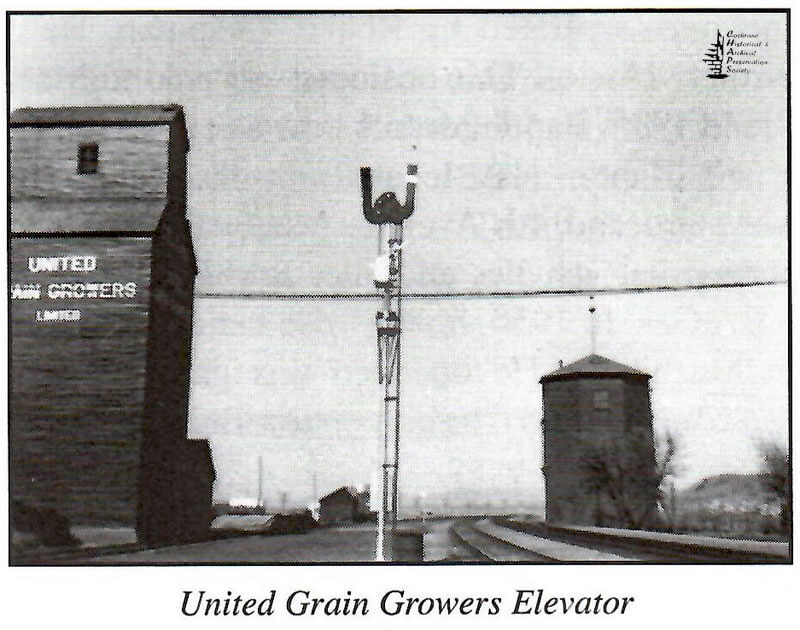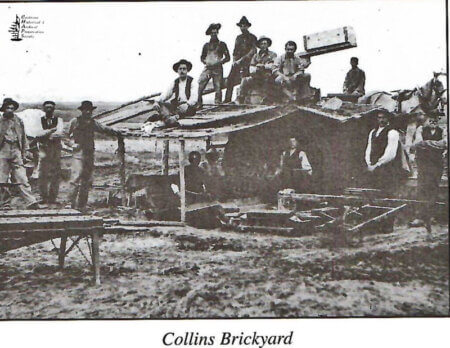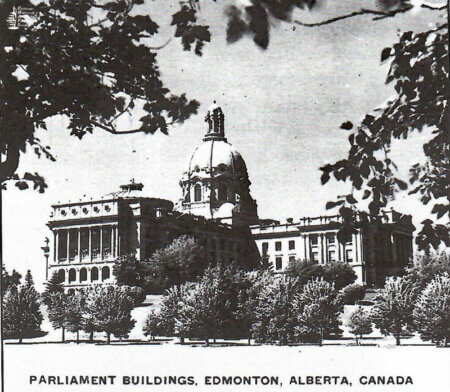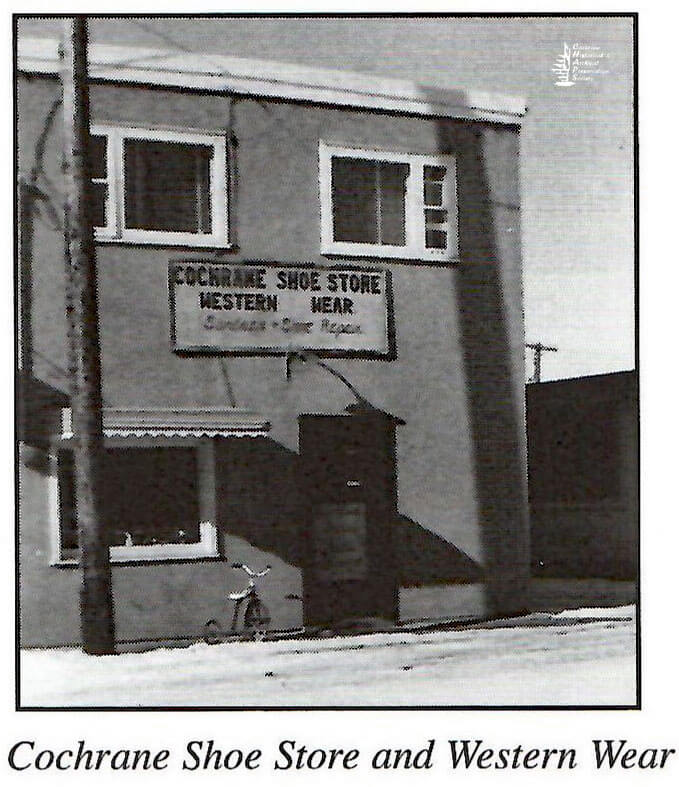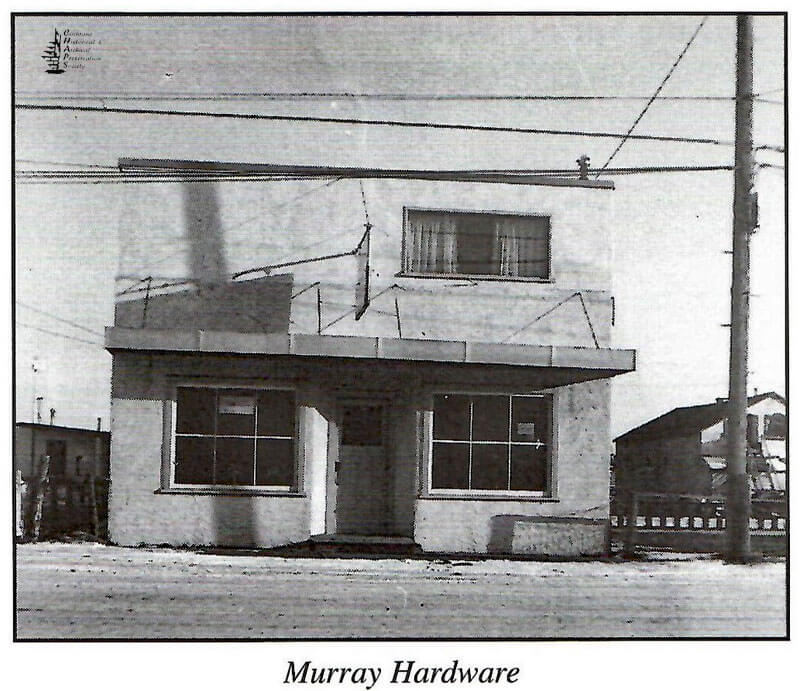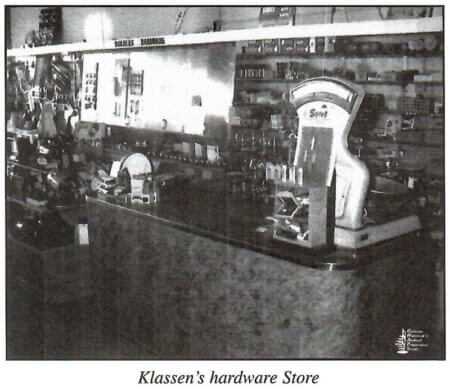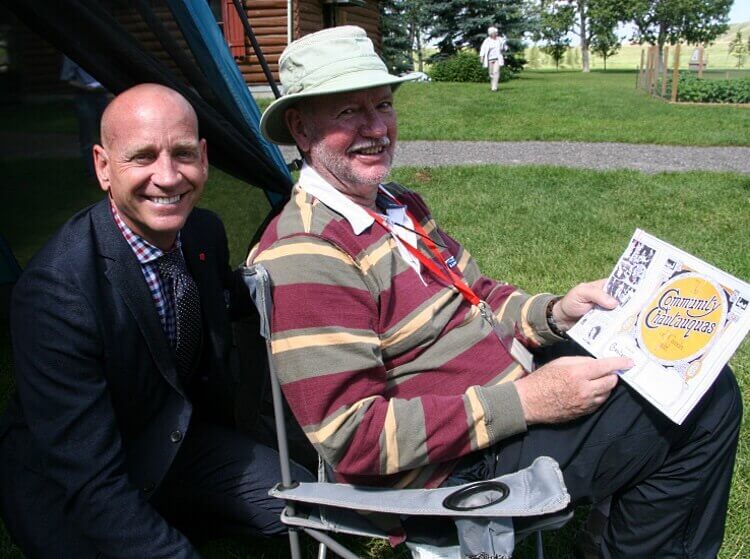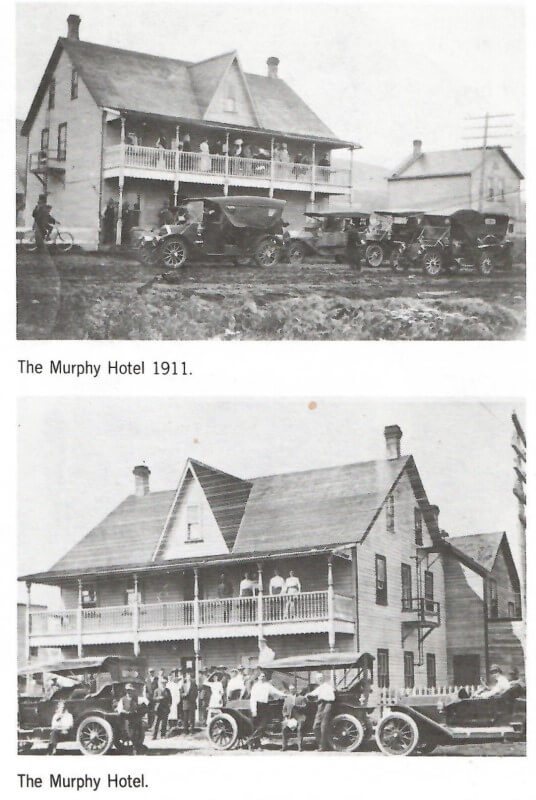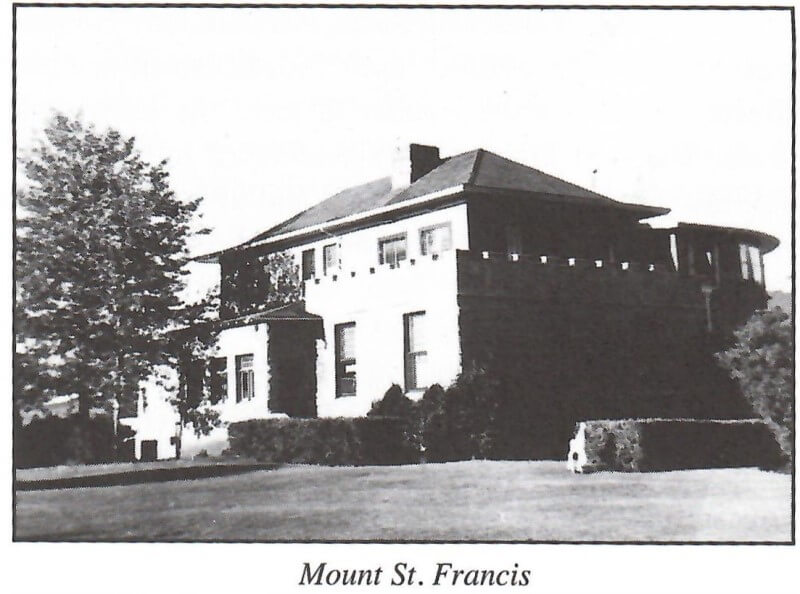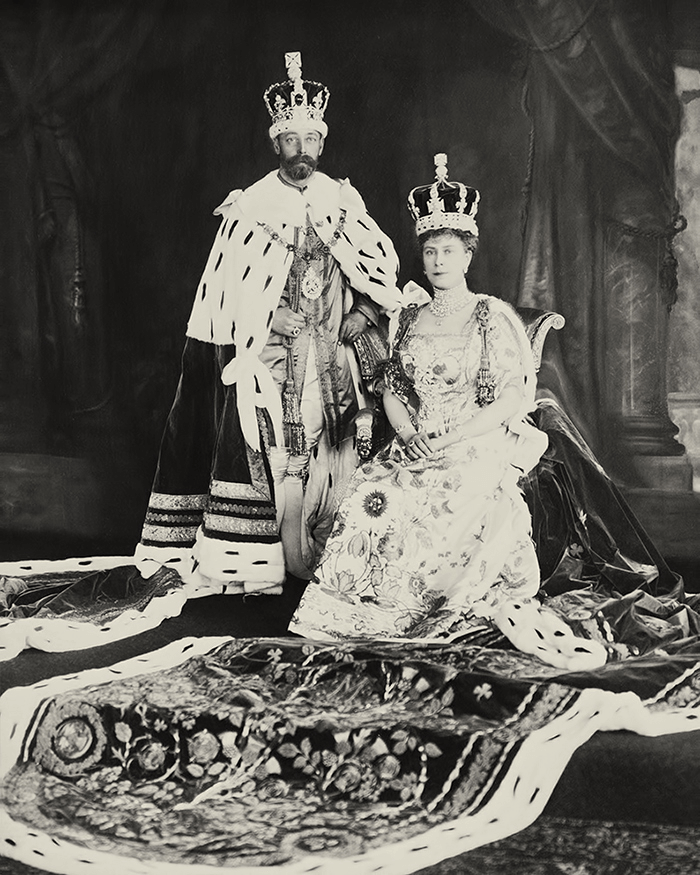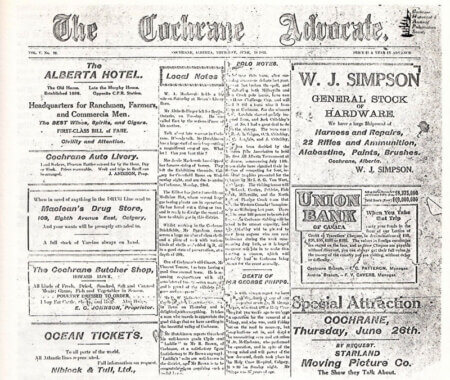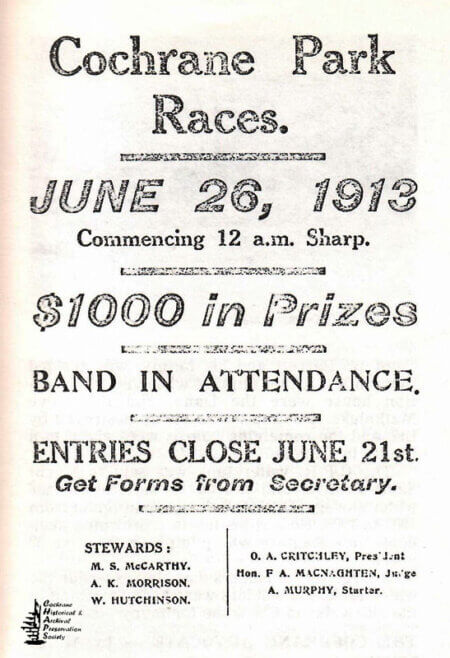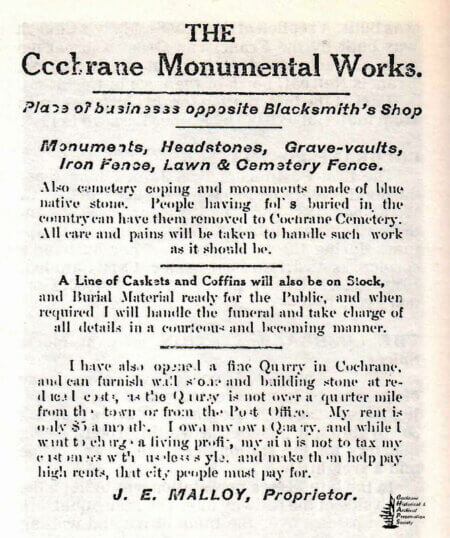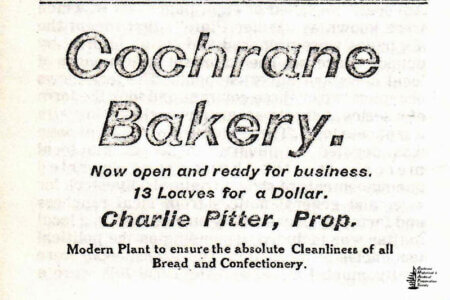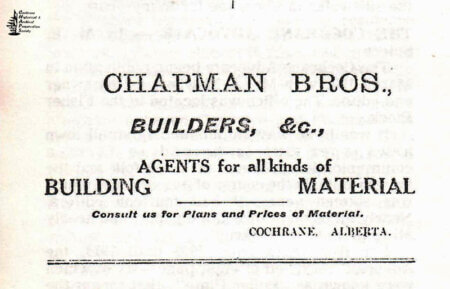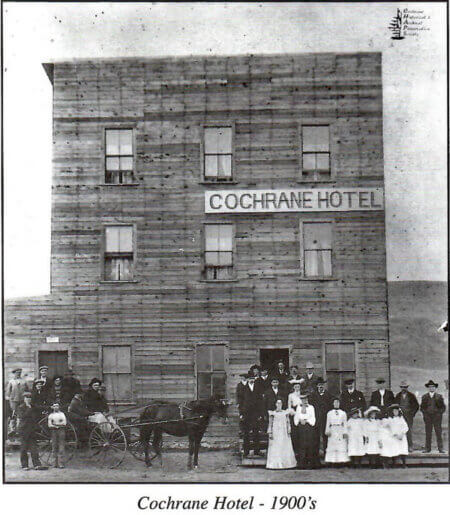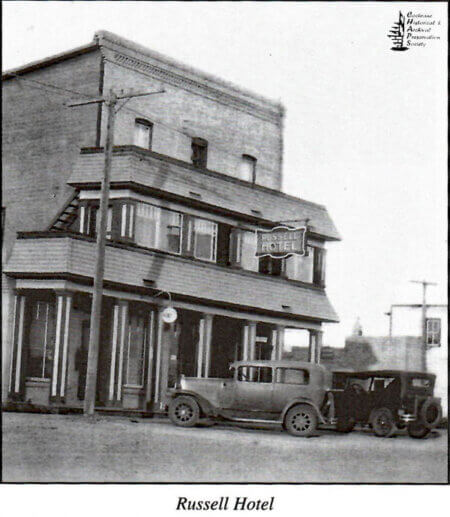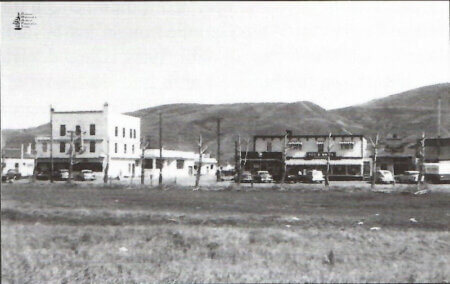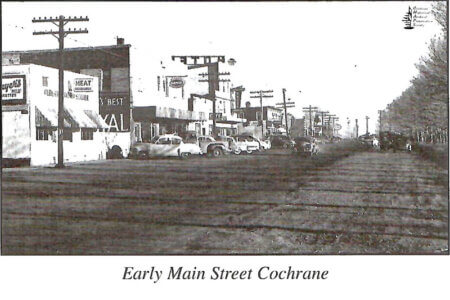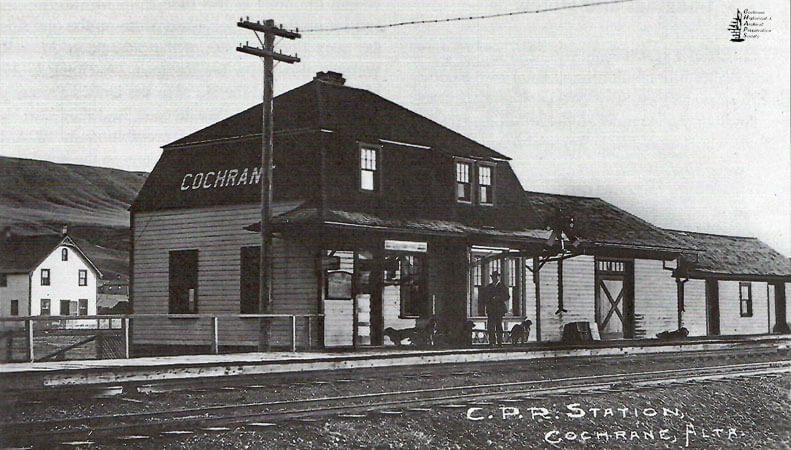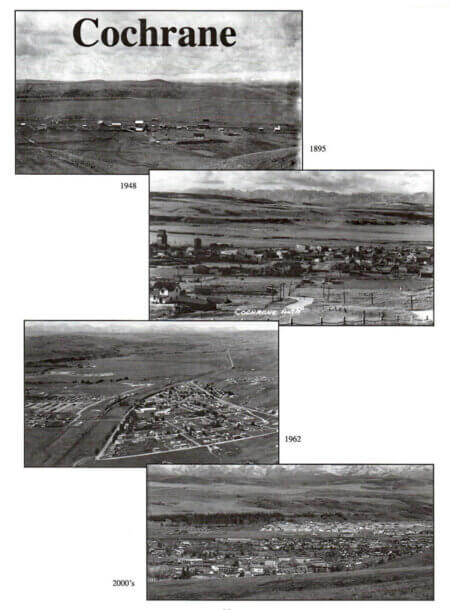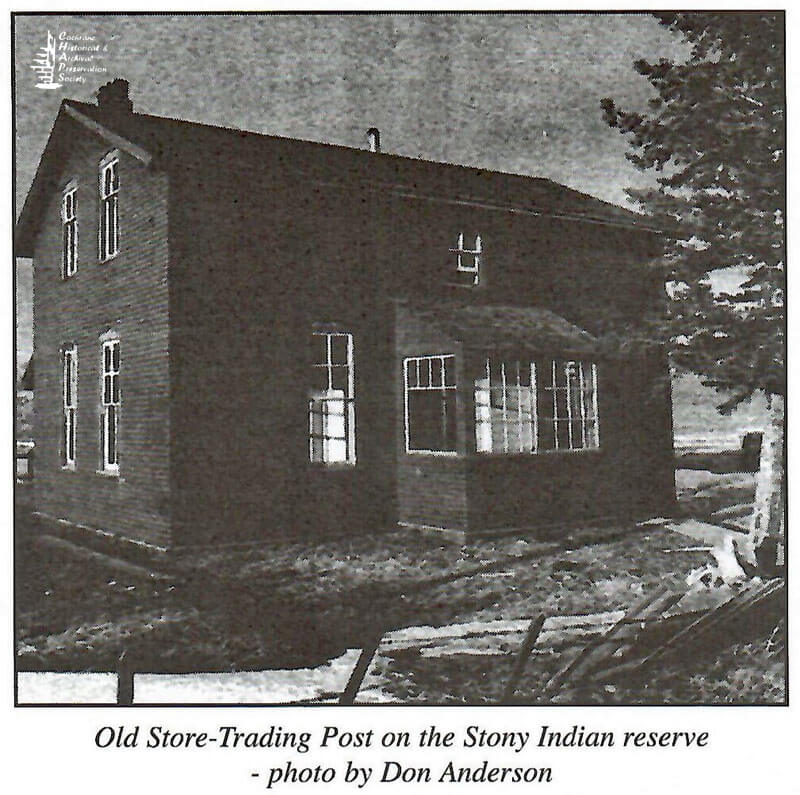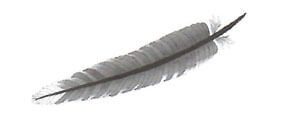1921
August 25
Six cars of cattle have been shipped this week from Cochrane to Montreal for export to Great Britain. D.P. McDonald shipped one car, J. McLeroy three cars and W. H. Wilderman of Priddis, two cars. This was all good quality beef, averaging around 1400 lbs.
1918
August 1
The Saskatoons are seemingly a good crop this year. Some of our citizens claim to have picked twenty pounds or more.
August 8
Our Campers during the hot wave of last week took to the water. Report has it, several mermaids were seen floating on the Jumping Pound.
August 29
Clever Exam Answers
Pupils of Public and High Schools are unusually clever about examination time, and now that the results of the midsummer tests have been published, it will be quite safe to make known a few bright answers discovered by the eagle-eyed examiners. For safety’s sake, the name of the school or student is not mentioned.
“A mountain range is a large cook stove”
“Sixty gallons makes one hedgehog❞
“Typhoid is prevented by fascination”
“Epidermis is what keeps your skin on”
“A volcano throws out hot saliva”
“The days are shorter in winter because cold contracts”
“A curve is a straight line that has been bent”
“A triangle is a three-cornered circle”
“A vacuum is an empty space with nothing in it”
“A circle is a straight line with a hole in it”
“A miracle is something a person does that can’t be done.”
“The heat of the torrid zone is caused by the equator which runs around the earth in the middle.’
1920
August 12
Saskatoon berries are the cheapest and most plentiful of fruit this year, cultivated berries being reported scarce and therefore high in price so that the wild berries are eagerly sought for and gathered by all who have time to go after them. Two well-known ladies of Cochrane on Tuesday picked two and a half bushels of Saskatoons, which alone indicates a heavy yield. Wild strawberries are also plentiful.
August 19
Several parties motoring from the city Sunday wre berry picking up the Big Hill creek, some motoring up to the Big Hill creek falls, a natural beauty al spot. Where they held private picnics and took in the beautiful scenery.
1923
August 30 Train Wreck
A serious train wreck occurred just east of Mitford early last Friday when a broken rail caused twelve cars of a freight train to leave the track. Fortunately, neither the engine or the caboose left the rails and none of the train crew were injured. The wreckage of the twelve cars was piled up in the greatest disorder, and the line was not clear for traffic until late in the afternoon. In the meanwhile, trains No. 13 and No. 1 were held at Cochrane and about noon, train No. 7 pulled in from the east and was also held until the line was clear. To pass away the time, a number of passengers from the trains staged a baseball game in front of the station.
1924
August 7
Tourists Delayed by Storms
The heavy storms which drenched the trails in the neighbourhood of Cochrane all last week, reached a climax during the weekend when a downpour of rain, which commenced shortly after one o’clock on Saturday afternoon, continued, almost without a break, until Monday. The bright sunshine of Saturday morning gave promise of a fine weekend and in spite of the bad condition of the roads, a large number of tourists started out from Calgary to Banff. By four o’clock the roads were practically impassable and Cochrane rapidly filled with travelers, both from the east and the west. Both garages were crammed to the doors with cars and each new arrival brought a fresh story of hours spent on the trail, mud holes, and trouble of one sort or another. The hotel rooms were quickly taken up and many late arrivals found accommodation in private houses, the curling rink, and in empty houses in the village. In the evening, the stranded tourists organized a dance in the Orange Hall and Mr. Cyril Godwin, of the Capitol orchestra, delighted all who were present with his beautiful violin selections.
A large number left for Calgary and Banff that evening, by train and as the bad weather continued on Sunday and cars still kept coming in from the west, the Banff special train stopped here on its way back from the mountains and took a large number into the city.
It is estimated that over sixty cars were held up in Cochrane, many of which did not get away until Wednesday.
August 7
During the storms last week, no less than twelve out of the fifteen lines connecting with the Cochrane Telephone Exchange were put out of commission by lightning.
August 14
Graveling has commenced on the Calgary – Banff highway at a point a few miles east of the top of the Cochrane hill.
During the month of July, there passed through the east gate into Banff no les than 5,300 motor cars as compared with 2,225 in the corresponding month in 1923.
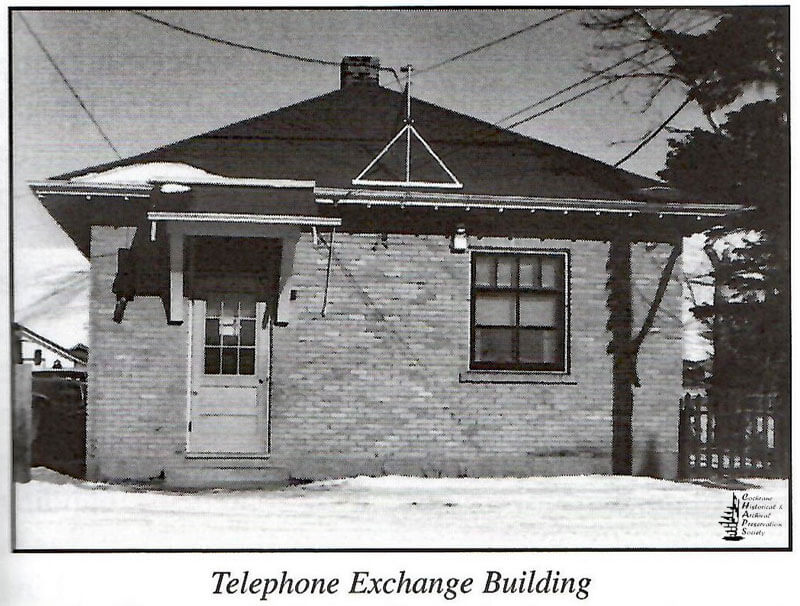
1925
August 20
A heavy downpour of rain, which lasted nearly three days, took place over this district. The moisture came too late to be of much benefit to the and interrupted haying operations for several days.
A large crew of men is busy on the new elevator in Cochrane and construction work is going ahead fast.
Preparations are being made to start drilling for oil again at the old Moose Mountain well.
August 27
Considerable snow fell in the district north of Cochrane last Saturday night. Fortunately the fall was not sufficiently heavy to seriously damage the crops and those which were beaten down are coming up again. Most of the barley and some wheat has been cut in this area.
NATIONAL FLAG COMPETITION
Rules and Suggestions
We respectfully invite public attention to the following resolution passed by our executive on June 12th and trust that it will meet with a ready response.
“RESOLVED that we offer a prize of FIVE HUNDRED DOLLARS FOR THE BEST DESIGN OF A DISTINCTIVELY Canadian National Flag, such prize to be doubled in the event of its being finally adopted by the Government, and a further prize of ONE HUNDRED DOLLARS for the best design submitted by a child attending a Canadian school.”
We suggest that designs should be:
(a) distinctively and originally “Canadian”, striking and dignified both to colour scheme and general appearance.
(b) of simple rather than complicated construction, readily lending itself to manufacture even in the home.
(c) No design to be less than two feet in length.
Designs should be sent in a separate enclosure with the name and address of the contestant on the outside upper left-hand corner of the package, addressed to F. W. Crawford, Secretary-Treasurer, Native Sons of Canada, 570 Granville St., Vancouver, B.C.
The doubling of the award of $500.00 is contingent on the adoption of our approved design by Parliament’s next session.
The competition is extended to December 1st, 1925. Those desiring return of designs should enclose postage
VANCOUVER ASSEMBLY NO. 2, NATIVE SONS OF CANADA, per Fenwick W. Crawford, Secretary-Treasurer
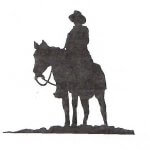
Deep Dive
- 1907 Royal Ensign
